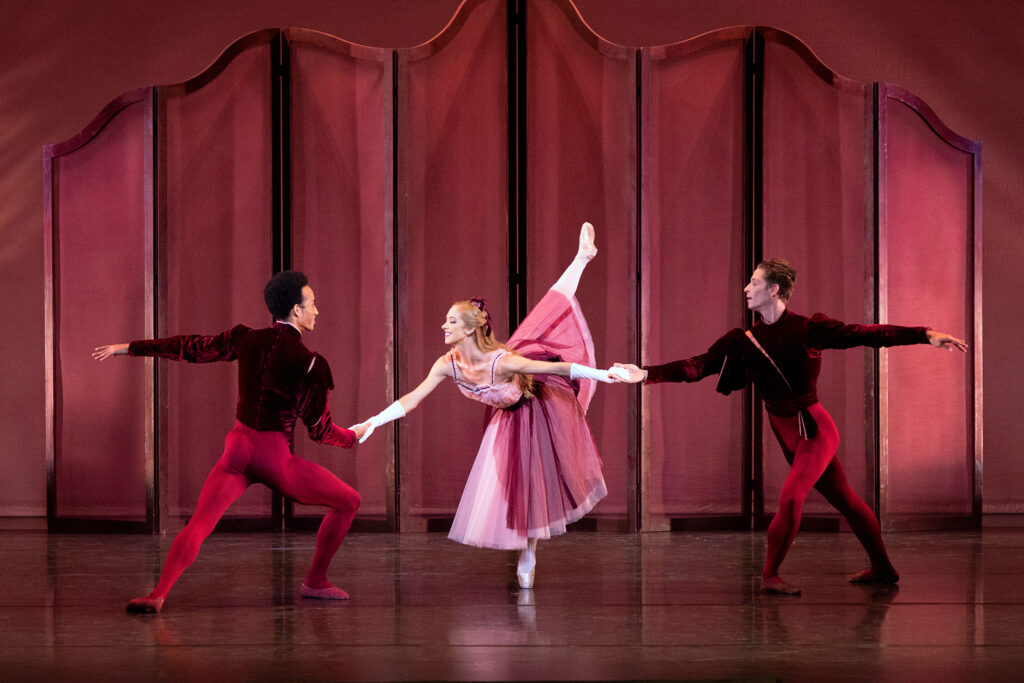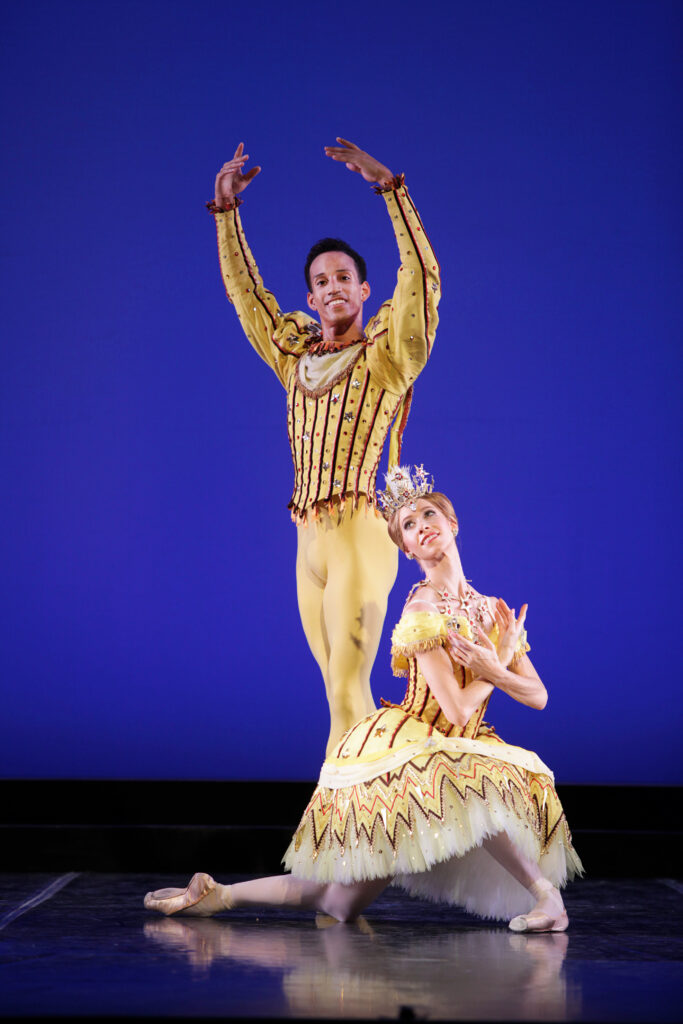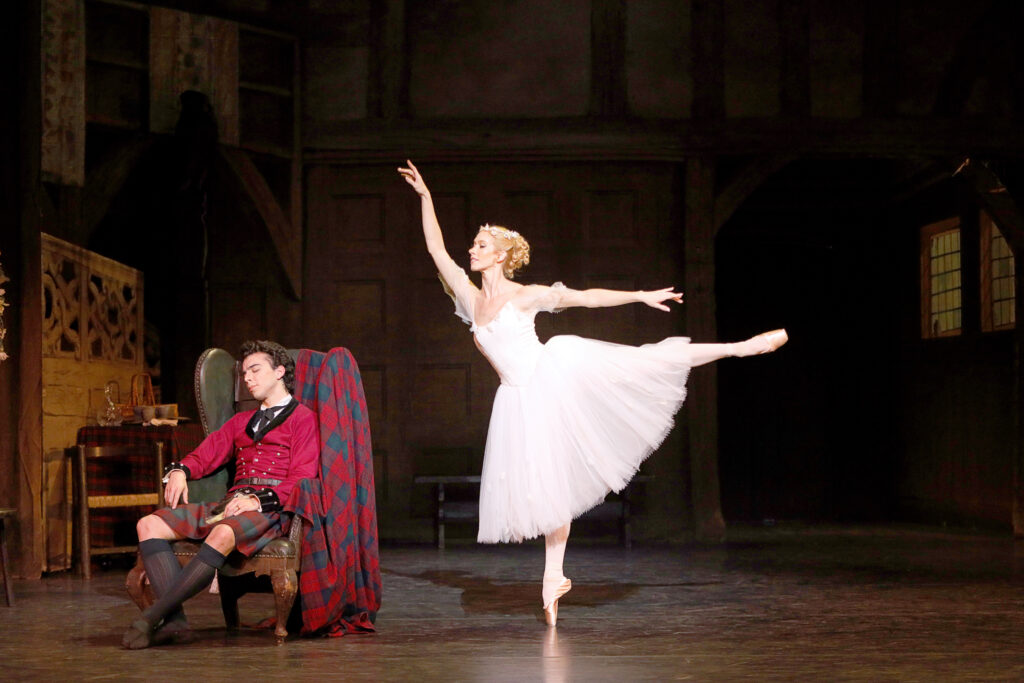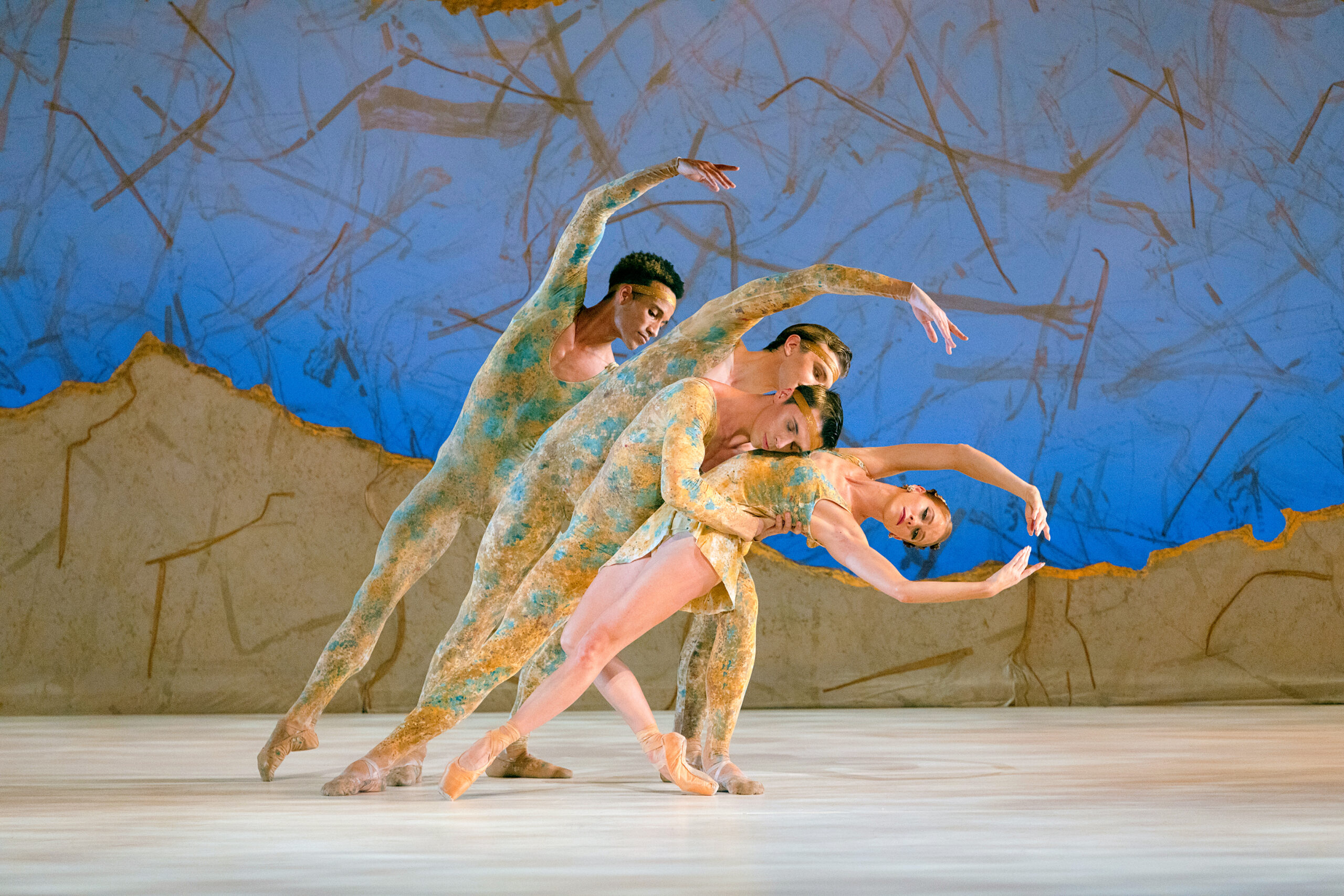The Stylist: For Sarasota Ballet’s Danielle Brown, Being Adaptable Is the Secret to Her Success
Danielle Brown joined The Sarasota Ballet in 2007, the year its then-new director, Iain Webb, took the reins. She became a principal three years later, and in the time since, has performed a vast array of roles, from Giselle to a showgirl in Balanchine’s Western Symphony and Lise in Frederick Ashton’s La Fille Mal Gardée. Recently, she was rehearsing for her debut in La Sylphide, in a staging by Johann Kobborg, formerly of the Royal Danish Ballet and Royal Ballet in London. Here she shares why versatility matters, and what it has taken to stay at the top of her game for over a decade.
Was this your first La Sylphide?
Yes, it was a company premiere, and I’d never danced the role before. I decided not to watch other productions and to come into the process as a blank canvas. When we did Giselle, which I grew up being obsessed with, I already had a thousand ideas of what I wanted to do.
I remember when you danced Giselle. It seemed you really knew what you wanted to do with the role. You had your own take.
I tried to depict her as someone who knows who she is and what she wants. I think it’s because I related so much to the character. I felt so at home with her, as if I knew her really well. So it came naturally.

You’ve done a huge gamut of roles, by Frederick Ashton, Balanchine, Robbins, Twyla Tharp, Wheeldon, as well as classical ballets. And you always seem at home in all of them.
I give my teachers credit for exposing me to so many different styles early on. I knew from a young age that I would need to be adaptable. I don’t have the “ideal” ballet body, the crazy legs and feet, and I wasn’t naturally super-flexible, or naturally a turner. So whenever I was cast in something, I thought: I can’t not be good at it. I had to be good at everything.
Do you have advice for a young dancer who, like you, feels maybe they don’t have a clear path ahead?
I would say determination and working smart and hard will take you so much farther than pretty legs and feet. And you have to love it so much that every time you’re disappointed, your passion will help you overcome that feeling. You can’t allow disappointment to chip away at your desire to do more and do better.
What drew you to ballet?
When I was little, I was very shy. I hated having to read in front of the class or do a presentation. Ballet was the one place where you had to be quiet, but you could express deep emotions. It was a way for me to have a voice and be in tune with my soul and my spirit and share that with the world. Then there is the challenge of it—I think that drew me. There’s no end to the work.
Were you ever tempted to try another company, just to see what it was like?
Maybe there were moments when I thought: I wonder if there’s more out there. But the rep we do here is so wonderful and the people that Iain Webb brings in to work with us are on such a high level. We’re working with people that the Royal Ballet and Paris Opéra and Bolshoi get to work with. What I wanted from my career was to do work that I was proud of, and we get to do rep that is world-class.

You’ve been a principal since 2010. How do you keep your mental focus and drive?
Eating well, taking care of myself, and taking care of my mental health, too. I advise therapy, therapy, therapy. I think every dancer should be in therapy. Even if you don’t think you have anything to work on, just the nature of the training and how you’re supposed to pick yourself apart, it’s worth it. You don’t realize how it trickles into every part of your life until you get older.
Do you love the process more, or are you more of a creature of the stage?
I do love the rehearsal process, but I also love that moment right before you go on when you’re really nervous, scared but excited. It makes you feel alive. And also, when you have one of those shows where you feel you said everything you wanted to say. It’s the best feeling in the world. It’s almost spiritual, as if time stopped and you’re in this other place.
Do you have a favorite choreographer?
It’s funny, I went from very strict Balanchine training to this English style that I had never really been exposed to. But as different as they seem on the surface, they’re actually very similar. It’s all about counterbalance and bending this way to go that way and moving big and with fullness.
You dance a lot of Ashton at Sarasota Ballet, which is quite unique. What does his work mean to you?
He always made his ballets for particular dancers, like Margot Fonteyn, and I feel that their spirit, and who they were as ballerinas, is peppered into the roles. I try to embrace that. I get to know them by dancing these roles that were made for them.
There is so much negativity around the power dynamics in ballet at the moment. How do you feel about the discussions that have been happening?
As much as I love ballet, there are some things I can’t defend about it. There are still a lot of white men in charge—I think that the more females become directors the more we will evolve past “This is how it has always been.” And the training can be quite abusive. I know when I went to school there were a lot of girls with eating disorders. They made you fill out this health form and you were supposed to circle the body you thought you looked like and then circle the one you wanted to look like. That shouldn’t happen anymore. We have to find a better way.

Have you danced any new ballets by women?
We’ve done ballets by Jessica Lang and Gemma Bond. Jessica Lang’s stage designer and costumer were women too. And the ballet really felt female-oriented. I thought: I love this.
Have you ever imagined yourself directing a company?
It’s not something I’m seeking out, but I think it would be really amazing. I would be excited to do things better, or differently. I have my own ideas of what company life could look like.






